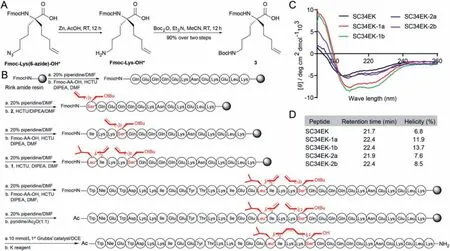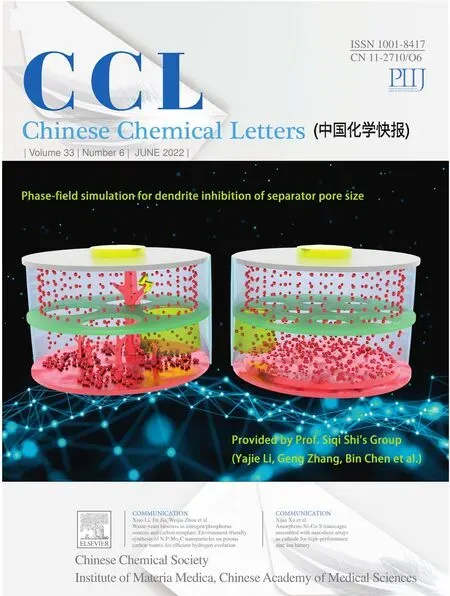Corrigendum to “Peptide stapling with the retention of double native side-chains” [Chinese Chemical Letters 32 (2021) 4045-4048]
2022-07-11YeWuYanZouLinglingSunAlfredoGarzinoDemoHonggangHuWeidongZhangXiangLi
Ye Wu,Yan Zou,Lingling Sun,Alfredo Garzino-Demo,d,Honggang Hu,Weidong Zhang,∗,Xiang Li,∗
a Institute of Interdisciplinary Integrative Medicine Research,Shanghai University of Traditional Chinese Medicine,Shanghai 201203,China
b School of Pharmacy,Second Military Medical University,Shanghai 200433,China
c Institute of Human Virology and Department of Microbiology and Immunology,University of Maryland School of Medicine,Baltimore,MD,21201,United States
d Department of Molecular Medicine,University of Padova,Padova 35121,Italy
e Institute of Translational Medicine,Shanghai University,Shanghai 200444,China
The authors regret having incorrectly labelled the molar concentration of 1stGrubbs’catalyst in Fig.3B.
The original manuscript illustrates molar concentration of 1stGrubbs’catalyst at 6 mol/L.This should have been 10 mmol/L;consistent with the molar concentration described in Supporting Information.
We confirm that the correction made in this erratum do not affect the original conclusions.
We have included in this document revised version of the aforementioned figure with correct molar concentration of 1stGrubbs’catalyst at 10 mmol/L.
The authors would like to apologise for any inconvenience caused.

Fig.3.(A) Synthetic route of 3.(B) Synthetic route for the preparation of stapled SC34EK-1a.(C) CD spectra of the peptides.(D) HPLC retention time and α-helicity of the peptides.
杂志排行
Chinese Chemical Letters的其它文章
- Flexible side arms of ditopic linker as effective tools to boost proton conductivity of Ni8-pyrazolate metal-organic framework
- Recent development in fluorescent probes based on attacking of double bond and masking of functional group
- Dual-metal zeolite imidazolate framework for efficient lithium storage boosted by synergistic effects and self-assembly 2D nanosheets
- Understanding the separator pore size inhibition effect on lithium dendrite via phase-field simulations
- An efficient single atom catalysts Os/P3C sheet for ammonia borane dehydrogenation
- A BODIPY-modified polymeric micelle for sustaining enhanced photodynamic therapy
